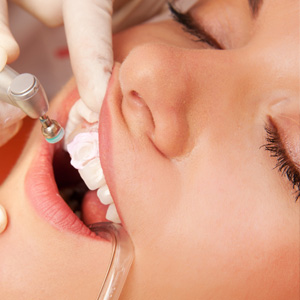Cavities
What are cavities? Dental cavities, also referred to as caries, are holes in teeth caused by bacteria along with certain kinds of foods high in sugar or starch. Bacteria eats away the enamel and structure of teeth. Bacteria also erodes away gum tissue causing periodontal disease. As bacteria eats away your tooth, this is known as tooth decay and cavities form.
Located in Dover, Dr. Patrick Wilson can help tooth decay prevention efforts for you children. If a cavity is found we will recommend the procedure specific to your child's case. In many cases a simple filling will prevent further decay and relieve the pain. If the case is more serious Dr. Wilson may recommend other procedures.
How does a cavity form?
There are hundreds of different types of bacteria that are normally present in the mouth. Some bacteria combines with the foods you eat. As bacteria combines with food and saliva, it forms a sticky substance called plaque. Foods rich in sugar and starches add to the stickiness of the plaque. Plaque only takes 20 minutes to form after eating. The longer the plaque remains on your teeth the harder it is to remove. If plaque remains on your teeth for more than a couple of days it turns into tartar or calculus. The bacteria in the plaque will convert sugar into acid that dissolves the tooth structure causing holes, or cavities. This is how a cavity is formed. Cavities can cause a fair amount of pain or sensitivity as the "hole" gets closer to the tooth root.
The parts of teeth that are most vulnerable to tooth decay are areas where plaque can accumulate easily. Plaque tends to settle into the pits and pockets of your teeth or on top of your teeth. Plaque also likes to hide in-between your teeth and next to the gum line. A cavity starts to erode the outer layer of the tooth known as the enamel. As the cavity gets deeper and deeper it penetrates into the softer inner layer of the tooth known as the dentin. When the cavity reaches dentin you will notice pain and discomfort.
Who is at risk of tooth decay?
Everyone who eats is at risk of tooth decay. As soon as your child's first tooth appears, they are at risk for tooth decay. Although saliva helps prevent plaque from attaching to teeth and helps wash away and digest food particles, additional cleaning must be present to ensure tooth decay prevention. Genetic factors may affect your child's risk of tooth decay. Your child may be at a higher risk of developing tooth decay if they have a low salivary flow or dry mouth. Tooth size and shape, thickness of enamel, tooth position, tooth eruption time and sequence, and your child's bite all may contribute to a higher risk of tooth decay. Only Dr. Wilson can help determine the correct routine and care for your child's teeth.
Technology
Dr. Wilson believes in using the latest in technology to provide you and your child the best comfort and the best dental care possible. Stop by and see the difference new technology makes with pediatric dental care.





